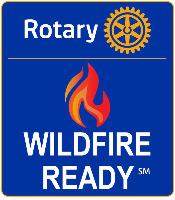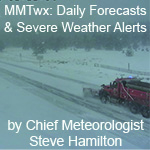- Posts: 69
- Thank you received: 0
- Forum
- Life Up the Hill
- Community News, Events, and Calendar
- As Wildfires Get Worse, So Are Firefighter Shortages
As Wildfires Get Worse, So Are Firefighter Shortages
- RotaryWildfireReady
-
 Topic Author
Topic Author
- Happy Camper
-

As Wildfires Get Worse, So Are Firefighter Shortages. Climate Change And Low Pay Aren’t HelpingCPR News spoke to a half-dozen U.S. Forest Service employees like Ives who have helped fight some of the country’s largest, most dangerous fires.
They say low pay and other labor issues have led to the staffing shortages in Colorado and other wildfire-prone states like California, Oregon and Washington.
Ives said the gaps have to be filled by existing forestry workers who are feeling exhausted and overwhelmed. The extra strain takes a toll on their mental health and personal lives.
Firefighters say the low pay is worsened by high housing costs in fire-prone areas where they’re often stationed.
Colorado Public Radio, July 1, 2021
www.rotarywildfireready.com/
In our mountain communities, wildfires are a major hazard. Residents are urged to take steps now to assess their wildfire risk, safeguard their homes and prepare for wildfire. You not only increase the safety of your property, but more importantly, you increase the safety of your family. We can help! See our website for helpful resources and information.
Please Log in or Create an account to join the conversation.
- RotaryWildfireReady
-
 Topic Author
Topic Author
- Happy Camper
-

- Posts: 69
- Thank you received: 0
As president of the National Association of State Foresters (NASF), Joe Fox, said in testimony on May 20 to the Senate Committee on Agriculture, Nutrition, and Forestry, “Wildfires in America are an emergency and should be treated like one.” At that hearing, broadly on the role of forestlands in addressing climate change, lawmakers and witnesses discussed challenges facing federal, state, and private land managers with 800 million acres to look after—many in poor ecological condition, overstocked with forest fuels, and in backlogged queues for restoration and reforestation attention.
However, Fox and Colorado Senator Michael Bennet agreed that a significant, long-term investment could make a big difference. According to NASF, to take care of the tremendous fuel reduction and restoration needs of our forests, the country must treat five million acres per year on top of our current activity (roughly three million acres per year). In their estimation, this will cost $60 billion over 10 years, a big jump from current funding levels that average $591 million per year. But, to put that number in perspective, Senator Bennet quoted a figure from the U.S. Forest Service (USFS): it costs an average of $50,000 per acre to fight a forest fire versus $1,500 an acre to perform fuel treatment. Adding the costs spared to people and communities from catastrophic wildfires, preparedness is the cheaper option. To help realize this, the lawmaker has introduced the Outdoor Restoration Partnership Act, which would authorize that level of funding to tackle the millions of acres of land that pose a severe wildfire risk.
NASF President Calls on Federal Government to Treat Wildfires as an Emergency in America
By Meghan Housewright, National Fire Protection Association, May 28, 2021
www.rotarywildfireready.com/
In our mountain communities, wildfires are a major hazard. Residents are urged to take steps now to assess their wildfire risk, safeguard their homes and prepare for wildfire. You not only increase the safety of your property, but more importantly, you increase the safety of your family. We can help! See our website for helpful resources and information.
Please Log in or Create an account to join the conversation.
- Forum
- Life Up the Hill
- Community News, Events, and Calendar
- As Wildfires Get Worse, So Are Firefighter Shortages






